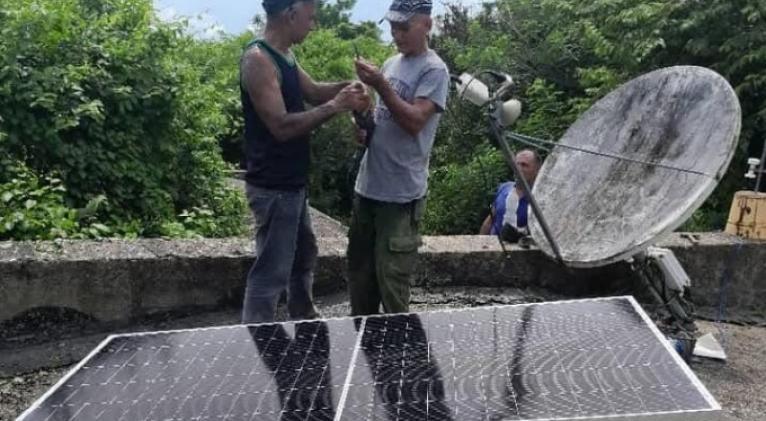What Happens to Meteorological, Seismic, and Tsunami Monitoring in Cuba When the National Power Grid Fails?
especiales

The Minister of Science, Technology and Environment, Armando Rodríguez Batista, has publicly addressed the question: What happens to meteorological surveillance and the Seismological and Tsunami Warning Systems in Cuba when the National Power Grid (SEN) collapses?
On his newly launched Facebook profile—active since September 5 and notable for its updates, clear language, and effective use of audiovisual tools—the minister published, on the very day the incident occurred, information provided by renowned meteorologist Ailyn Justiz Águila, head of the Forecast Center at the Institute of Meteorology:
“In a situation like the one we are experiencing with the collapse of the National Power Grid, the national meteorological service maintains its monitoring operations through plants or backup generators across the country.
“In the case of meteorological stations, provincial centers, or the Institute’s own headquarters, when some of these power systems prevent us from connecting, we seek alternative means, such as mobile or landline telephony.”
Ms. Justiz Águila added that the team strives to maintain communication “with whoever has the ability to connect and sustain monitoring through radars, satellites…”
Although the meteorological situation was stable at the time of the blackout, the specialist emphasized that in the event of adverse weather, with a system threatening the country or its vicinity, “it becomes critically important for meteorological monitoring to maintain the required efficiency.”
To ensure such surveillance, she highlighted the importance of coordination among all who have access to meteorological data, whether by electricity or alternative means. This allows them to assess prevailing weather conditions until the primary services are restored.
She clarified that “a good portion of meteorological instruments do not require electricity to function. The fundamental issue is how the meteorological observer conveys the data to the centers that use it and to the national headquarters, where monitoring continues via radar, satellite, or other tools that do require electricity, and where the main weather variables are tracked. The meteorological service’s vitality is guaranteed.”
The same applies to Cuba’s Seismological and Tsunami Warning Systems, overseen by the National Center for Seismological Research (CNAIS), headquartered in Santiago de Cuba.
Seismic and Tsunami Monitoring and Alerts Guaranteed
On his Facebook profile, the CITMA minister explained that, for several years, the strategy has been for the 24 seismological stations—distributed across 11 provinces and the special municipality of Isla de la Juventud—to have power backup systems supplied by solar panels and batteries, ensuring complete autonomy in their 24-hour operations.
He noted that a similar system was recently installed at the Central Station in the city of Holguín, while another is being deployed at the Central Station of the National Seismological Service in Santiago de Cuba. Until the installation is completed, that station continues to operate with a generator.
“Considering the impact on communications caused by electricity service interruptions, the network of stations within the Cuban Seismological Service has diversified its communication channels, so that even if some stations are cut off from ETECSA’s network, others can compensate for nationwide monitoring,” the source reported.
“Science is also done with feet in the sand and hearts beating to the rhythm of the people,” Minister Rodríguez Batista—also a professor and graduate in Radiochemistry from the Higher Institute of Nuclear Science and Technology—remarked during his recent participation in the cleanup of La Concha beach.
Perhaps it should also be added that science is done, as these explanations demonstrate, in the very heart of a blackout—and always, as the minister himself underscored, with “hearts beating to the rhythm of the people.”
Translated by Sergio A. Paneque Díaz / CubaSí Translation Staff














Add new comment